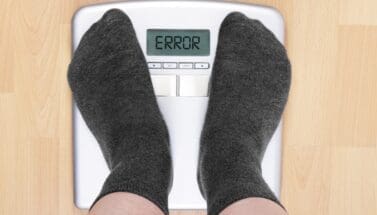- Discover the practice of carb cycling, a growing trend in the health and fitness world
- How carb cycling works and why carbohydrates are essential for the body
- Why carb cycling is beneficial for weight loss and muscle preservation
- Find useful tips and guidelines for developing your own carb cycling diet plan
Carb Cycling for Weight Loss and Muscle Preservation
To carb or not to carb? That is the question that has been up for debate in the health and fitness world for decades. While many swear by high protein and low carb diets like Atkins, paleo, and keto, there are top trainers, bodybuilder,s and athletes embracing sugar molecules to fuel their bodies through carb cycling, which can also be a useful tool for weight loss as well as muscle preservation. Let’s burn through the basics of carb cycling below.
What Is Carb Cycling?
Carb cycling is, quite simply, alternating between low and high carb dietary days, loading up on the macronutrient before workouts and avoiding carbs in favor of proteins and healthy fats on rest days. Carbs serve as fuel for the body, giving us much-needed energy to complete intense workouts, but if we’re not burning off the carbohydrate intake, the body turns these excess calories to fat, which is why it’s important to significantly cut back on carbs during days we know we won’t be moving as much when carb cycling.
How Carb Cycling Works
Carbohydrates are common in a plethora of foods, including all of our favorite baked goods, snacks, and sodas, but that doesn’t mean you should pig out on Cherry Coke, cake, cookies, and pizza on a high carb cycle day. It’s essential to ingest complex carbohydrates for your body from healthier sources, like whole grains, fruits, vegetables, and legumes (more on this further down) in order to replenish glycogen, a polysaccharide of glucose and a primary source of energy that the body stores in the liver and muscles.
Think of glucose as immediate energy used for bodily functions — breathing, digestion, brain function — while glycogen is stored for later use, coming in handy during intense and prolonged exercise. Carbs are also stored as fat cells, which are a source of energy, too, once glucose and glycogen have been used up by the body first. But if the body isn’t active enough, those fat cells add up to excessive weight gain, so it’s really important to find the balance between carbohydrate intake and energetic output to make sure carb cycling is working for your fitness goals, not against them.
Carb Cycling for Muscle Preservation
Carb cycling also aims to maximize muscle preservation by providing the body with enough carbohydrates to support activity, recovery and prevent muscle breakdown. The body needs, at a minimum, 50 to 100 grams of carbs a day to prevent processes that break down protein tissues to make glucose, which can lead to muscle loss over time. Although the aim of carb cycling is to force the body to draw energy from fat storage, certain cells can’t use fat for energy, so the body breaks down protein tissues, instead. A steady supply of complex carbs from whole foods on activity days and a minimal amount on rest days is therefore essential for preserving those glorious gains from all that gym time.
Carb Cycling for Weight Loss
For those considering carb cycling for weight loss, the dynamic diet works in your body’s favor in several ways:
Better performance on workout days:
- Before your body can burn fat, your body will need plenty of energy to burn through. Complex carbs fuel the body for those long runs or gym sessions, which typically start burning fat for energy after 30-60 minutes of moderate exercise. Additionally, carbs are essential for brain function; fitness motivation and mental clarity may be impaired by pesky brain fog that arises from malnutrition.
Fat for fuel on low-carb days:
- While your body is depleting glucose and glycogen on workout days, it will turn to fat for fuel on low-carb days of the cycle. The breaks between high carb consumption give your body a chance to burn fat instead of carbs.
Ultimately, there haven’t been enough extensive scientific studies to suggest this is an effective long-term strategy for weight loss, but carb cycling is a trend known for kick-starting the process. The National Institute of Health reported that randomized trials have demonstrated that low-carbohydrate diets produced greater short-term weight loss than low-fat, calorie-restricted diets, but concluded “weight loss can be achieved with either a low-fat or low-carbohydrate diet when coupled with behavioral treatment.”
The most important aspect of any diet, however, is sustainability. Cutting carbohydrates entirely can be torture for those who enjoy carb-rich dishes, like pasta, but carb cycling allows for measured indulgence, breaking up the monotony of a low-calorie diet. As a general rule, the key to losing weight is burning more calories than one consumes, so finding a healthy balance between joyful and restrictive eating, paired with proper exercise,e is essential for success.
A Carb Cycling Diet Plan
Last but not least, let’s get into the details of the carb cycling diet, starting with excellent sources of complex carbohydrates: bananas, oranges, apples, blueberries, sweet potatoes, beans, chickpeas, lentils, quinoa, brown rice, and yogurt to name a few. Again, prioritize whole foods (fruits, vegetables, dairy, legumes, and grains) over processed snacks and junk food, as the former also benefits the body through minerals and vitamins without packing excessive fat.
A proper carb cycling diet plan is entirely dependent on your workout schedule and fitness goals. There is no standard, one-size-fits-all approach, but there’s a general rule of thumb that will guide your personalized plan: sync higher carb consumption with higher activity and lower carb consumption with lower activity.
On an intense workout day, aim for about 200 grams of healthy carbs; on a moderate day of exercise, aim for 100 grams; and on a full rest day, just 50 grams. Pair your carb consumption with lean protein on high activity days, and lean into healthy fats on rest days to make up for calories and feel fuller so you’re not constantly craving food all day.
It’s important to note that carb cycling isn’t for everyone, especially people with diabetes or low blood sugar who need steady glucose in their blood, or those who have struggled with eating disorders.
Enhance Your Carb Cycling Journey with Rock’s Discount Vitamins
At Rock’s Discount Vitamins, we carry the best dietary supplements for weight loss as well as muscle building and muscle preservation. If you’re considering carb cycling and need products or advice to help facilitate the change in lifestyle, our team is here to help.
Visit us online or stop by one of our locations to explore our premium selection of supplements tailored to your needs. Let us help you create a plan that works for you so you can stay energized, recover faster, and achieve your goals!





